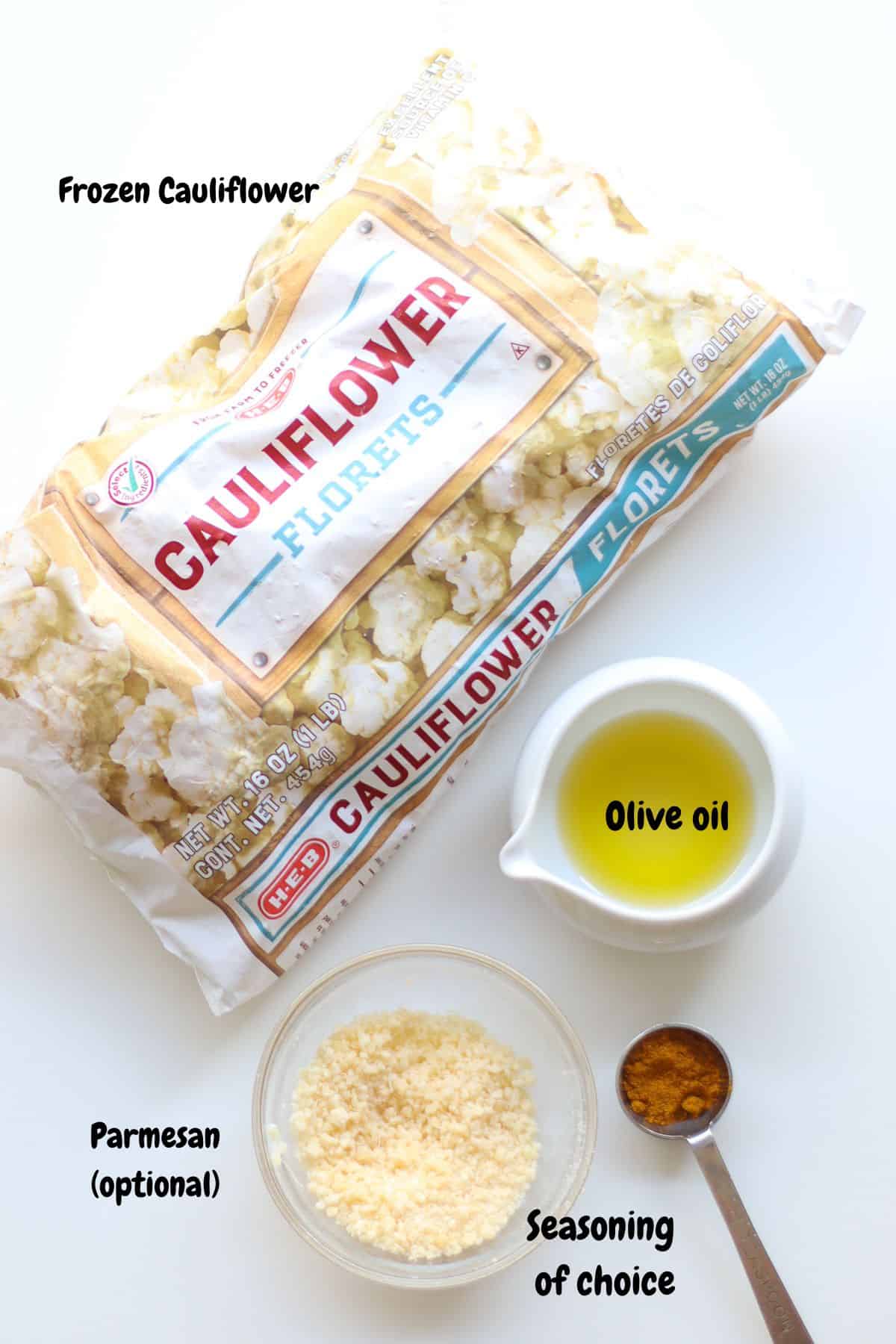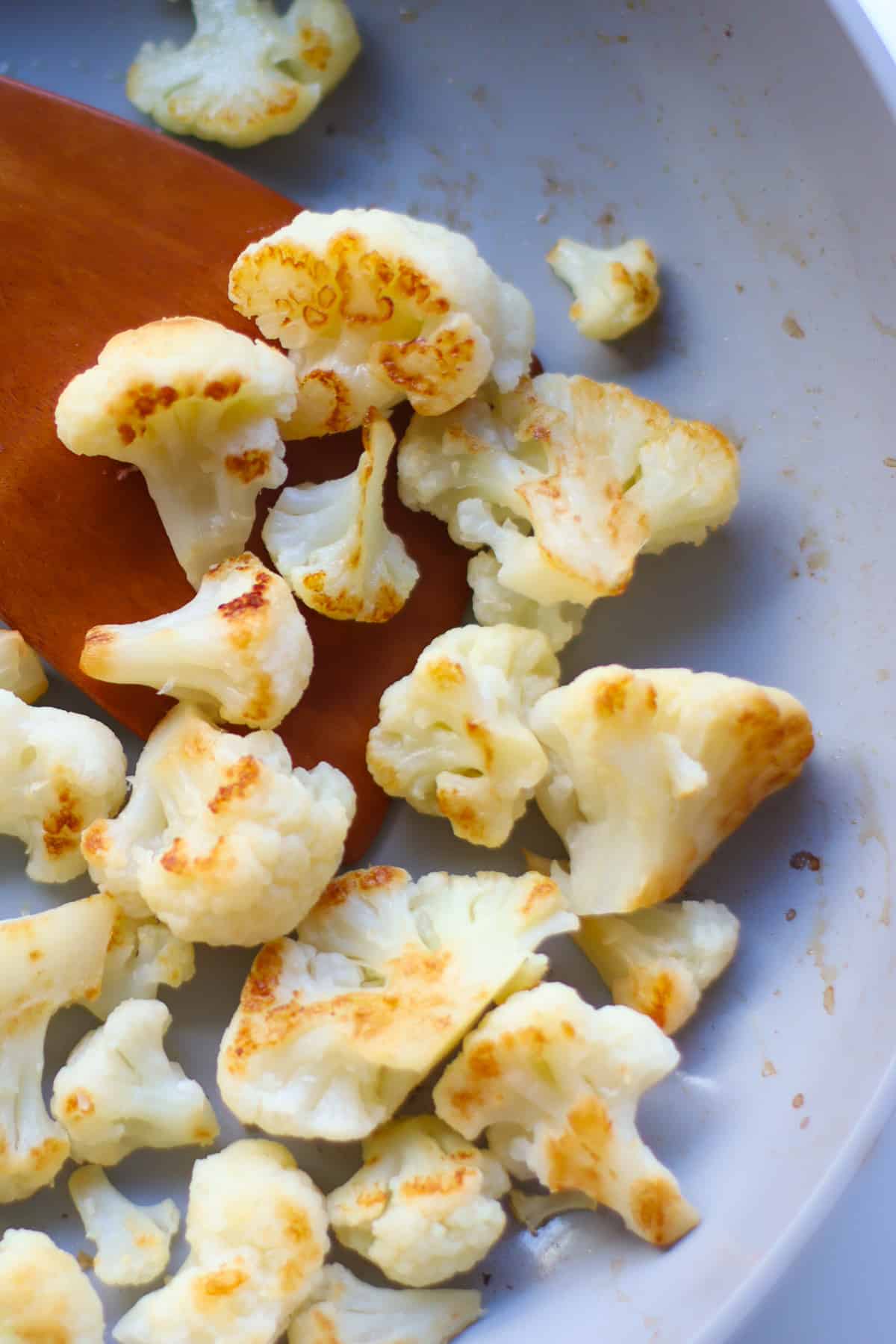Frozen Cauliflower
Having frozen cauliflower (or any frozen veggies) on hand is a game-changer – it’s just as nutritious (if not more!) as its fresh counterpart, budget-friendly, super convenient, and a hero in fighting food waste. Keep it in the freezer until you’re ready to enjoy, and there are countless ways to turn it into something delicious! And if you’re looking for more, here’s how to cook frozen green beans, frozen broccoli, frozen Brussels sprouts, and frozen peas. Did I mention I love frozen veggies? ;).
Selecting the Best Frozen Cauliflower
The tricky part about picking the perfect frozen cauliflower is not being able to see what’s inside the bag. Quality and taste can vary between brands, so it’s a good idea to grab a bag from different stores when you can. Don’t overlook store brands either; they can be just as fantastic as the big names. What I recommend is to feel the bag. If you feel large, solid masses or clumps, it may suggest that the cauliflower has thawed and refrozen, potentially affecting its quality. And once you open it, there should be minimal ice crystals and no dark or off-color cauliflower. My top favorites are 365 by Whole Foods, Costco, HEB, and Trader Joe’s. What you want to avoid are seasoned cauliflower. The only ingredient you want to see is cauliflower.
Ingredients
Frozen cauliflower florets Oil – Needed for roasting and sauteeing. Any neutral oil will work, like olive oil or avocado oil. I also love sesame oil for sauteeing. Seasonings – boosting the flavor of cauliflower is as simple as incorporating your favorite herbs and spices. Feel free to experiment and find the perfect combination that transforms your cauliflower from tasty to downright fabulous! Our favorites are garlic powder, onion powder, cumin, smoked paprika, turmeric, and curry powder.
How to Cook Frozen Cauliflower
There is no need to thaw the cauliflower for any of these cooking methods. Just add straight from the freezer!
Roast
Although the cauliflower might not achieve the same level of crispiness as freshly roasted cauliflower, it maintains a satisfying texture and can be flavored just as wonderfully! For babies, I recommend steam roasting or steaming (see below) as the cauliflower needs to be very soft.
Saute
While many recommend thawing the cauliflower first, I’ve found this method to be easier and produces the most optimal texture.
Steam
Microwave
Place 1/2 pound of cauliflower and 2 tablespoons water into a microwave safe dish. Cover with a lid or microwave safe dish. Microwave on high for 2 minutes. Stir and cook for 2-3 additional minutes. It will take about 4-5 minutes. Strain and season.
Added to Recipes
There are plenty of ways to mix frozen cauliflower into your recipes, adding flavor, texture, and nutrition all in one go! They’re a great addition to:
Creamy Cauliflower Dip Broccoli Cauliflower Soup Cashew Pasta Sauce Cauliflower Chickpea Soup Sweet Potato Quinoa Lasagna Healthy Chicken Nuggets Peach Banana Smoothie
Tips for Success
Don’t thaw frozen cauliflower in the fridge or on the countertop. The pieces will get too soggy. Avoid overcooking! Frozen cauliflower is pre-boiled (or blanched in boiling water for a few minutes) before being quickly frozen, so it cooks faster than freshly chopped cauliflower.
Storage
For the best texture, I recommend enjoying the cooked frozen cauliflower right after preparing it. Yet, as a mom to toddlers, I also find it convenient to cook up a large batch to have easily throughout the week—you never know how much the little ones will eat! In that case, allow the vegetables to cool before transferring to an airtight container. It will keep in the refrigerator for up to 5 days. You can reheat briefly in the microwave or on the stove or enjoy cold, which is what we do most of the time. You can also add the leftovers to easy meals like:
Savory French Toast Oatmeal Broccoli Hummus Dip Baked Salmon Patties Veggie Nuggets Pizza Quesadilla Pizza Eggs
Did you make this recipe? Leave a rating below and let me know how you liked the recipe! Your feedback means so much to me!






